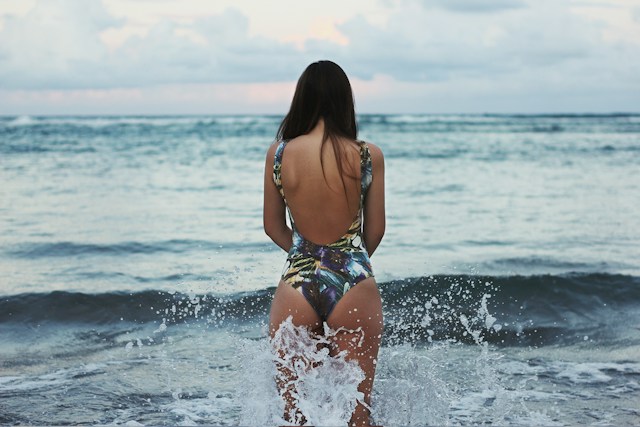Belize is a paradise for water enthusiasts, offering idyllic Caribbean waters protected by one of the world’s second largest barrier reefs, expansive beaches that call out to you, and consistent warm temperatures that make this destination ideal for splashing around in its tropical waters.
But is Belize safe for swimming?
Belize’s Coastal Environment: Safety Factors
Belize boasts an untouched coastline and diverse wildlife scene, which attracts millions of visitors each year. Its Caribbean waters are ideal for swimming, snorkeling and diving, while inland there’s the chance of encountering jaguars at Cockscomb Basin Wildlife Sanctuary or exploring Mayan ruins – it’s clear why Belize draws such interest.
Belize City and other urban centers may present danger, while travelers should exercise extreme caution if venturing further afield, particularly remote border regions. Travelers should remain within tourist areas in Belize City or avoid them altogether for best results.
Erosion-caused flooding and salinization risks threaten coastal areas, impacting marine biodiversity and threatening animal habitat loss. Sand mining threatens beaches as well as sea turtles – this poses a major concern to a nation that boasts one of the top ecotourism spots for sea turtle ecotourism.
Coral reefs play an integral part of Belize’s marine environment, providing shelter and sustenance to many forms of marine life, while acting as natural barriers that protect shorelines from waves and currents. Unfortunately, their existence is currently threatened due to climate change, pollution and overfishing.
Coastal erosion is also having a devastating impact on coral reefs, leaving them more susceptible than ever before to bleaching and other forms of degradation. This poses an urgent problem as reefs serve as primary economic engines of nations as well as providing food security to millions of people worldwide.
Belize waters are generally safe for swimmers, though you should still assess your own abilities and pay attention to warning signs. Children must always be under constant supervision while non-swimmers should use a flotation device. Furthermore, sunscreen application should be done frequently due to strong sun in this part of the world.
Check with your home government for travel advisories as these may change quickly. At present, the Centers for Disease Control (CDC) lists Belize as a Level 3 “Reconsider Travel” destination for US citizens; however this status could easily shift in the coming months or years.
Belize Water Quality: Pollution Levels
With the Belize Barrier Reef off of Belize’s coast, many of its beaches enjoy calm, shallow water that’s ideal for swimming. Unfortunately, however, this beautiful marine environment may also be affected by pollution.
Activities that adversely impact water quality include dredging, industrial waste disposal, agricultural runoff and transportation. All of these can contribute to eutrophication which lowers oxygen levels in the water, impacting aquatic life negatively.
Belizean authorities are taking proactive measures to avoid this scenario from unfolding. The Coastal Zone Management Authority and Institute (CZMAI), an official government body responsible for monitoring water quality to protect Belize’s marine ecosystem. CZMAI also develops strategies for safeguarding Belize’s coastal regions.
Raw sewage is one of the primary contributors to pollution in Belize. This waste can enter coastal waters near San Pedro, Ambergris Caye, and elsewhere along its southern coastline, negatively affecting coral health. That is why CZMAI and local sustainable development organizations have come together to enhance Belize’s water sanitation system.
Trash can have an enormous effect on water quality in Belize, particularly plastic debris that has been carried to beaches by wind or waves and washed into the sea, impacting wildlife such as marine turtles, fish, and birds that rely on this ecosystem to feed and breed.
Although swimming in Belize remains safe, swimmers must still remain mindful of jellyfish presence and listen for warnings or signs that indicate their presence. As these creatures can be deadly if consumed directly, it’s essential that all safety instructions and precautions be adhered to so as to avoid contact.
If you are unsure whether it is safe for you to swim in an area, speak with locals. They will know the best spots and any dangers present. In addition, bring along a bottle of water when visiting Belize; many hotels provide it, while you may also find places with filtered tap water that allows people to drink – this way you won’t end up using disposable plastic bottles during your vacation!
Wildlife Risks in Belize: Precautions for Swimmers
Belize’s tropical environment supports an abundance of land and sea wildlife. However, it is important to keep in mind that certain creatures and plants present may require extra caution and respect, such as bullet ants, poison dart frogs, eyelash vipers and fer de lance snakes – just some examples of Belize’s abundant biodiversity!
Avoiding close encounters with such wildlife can help lower the risk of danger; to make this easier it’s wiser to swim in areas with lifeguards available so as to reduce risks from close encounters with aquatic species such as hammerhead sharks and lionfish.
Protective clothing should also be worn when venturing into forests or other wilderness settings, to reduce the chances of encountering dangerous creatures like venomous snakes and insects as well as prevent insect bites or skin irritations from insects. Furthermore, it’s also wise to bring appropriate footwear in order to avoid slipperiness on slippery or uneven terrain and potentially fall.
Unfortunately, most of Belize’s dangerous creatures are less hostile than they seem and prefer keeping their distance. To stay safe when swimming and in the sun, adhere to safe swimming guidelines, use sunscreen with SPF 30+ protection, and observe wildlife from a safe distance.
Prior to traveling to Belize, travelers should ensure they have been provided with all required vaccinations and medicines, such as the Hepatitis A vaccine which is recommended for all travelers aged one year or over and is readily available at health clinics throughout the country.
Additional health-related precautions in Belize should include monitoring local weather conditions and avoiding demonstrations or large public gatherings that can quickly turn violent. Finally, visitors should be wary of gang-related violence in Toledo District; visitors are strongly advised to avoid it if possible. In general, though, crime in Belize remains relatively rare and most visitors enjoy an enjoyable experience when traveling through this beautiful country.
Local Tips: Safe Ocean Swimming in Belize
Belize’s Caribbean beaches offer something for nearly all travelers, from family vacationers seeking relaxation to nature enthusiasts looking for excitement. No visit would be complete without exploring the world’s second-largest barrier reef and snorkeling to discover some of its amazing marine life; but it is essential that swimmers make informed decisions regarding swimming safety in Belize’s coastal waters.
Placencia, Maya Beach and Ambergris Caye are among the country’s most beloved beach destinations; their waters are usually calm and shallow enough for easy swimming and snorkeling. Furthermore, you won’t encounter rolling waves and black flag days as is common with ocean swimming in other countries such as the US or elsewhere.
As an extra measure to ensure safe ocean swimming in Belize, follow some basic packing and safety tips when packing. Be sure to pack comfortable flip-flops or waterproof sandals, sunhat and sunglasses, an umbrella if planning on visiting during rainy season and reef-safe sunscreen (oxybenzone-free and reef safe preferred) along with bug repellent designed specifically to combat sand fleas (bug repellent formulated against these insects can also come in handy) just in case these pests appear while you walk along beaches or during inland excursions.
While Belize can always make for an exciting trip, for the best experience it is best to avoid it during hurricane season from June-November and visit between January-May, during its dry season.
Remember, unlike most developed nations, Belize does not possess a central government or police force that strictly enforces laws and ordinances; crime prevention takes place mostly at village level instead. While this makes for greater safety overall, this can make things a bit less predictable than places with strict enforcement. Luckily, locals usually quickly inform tourists of any potentially risky areas or activities.




